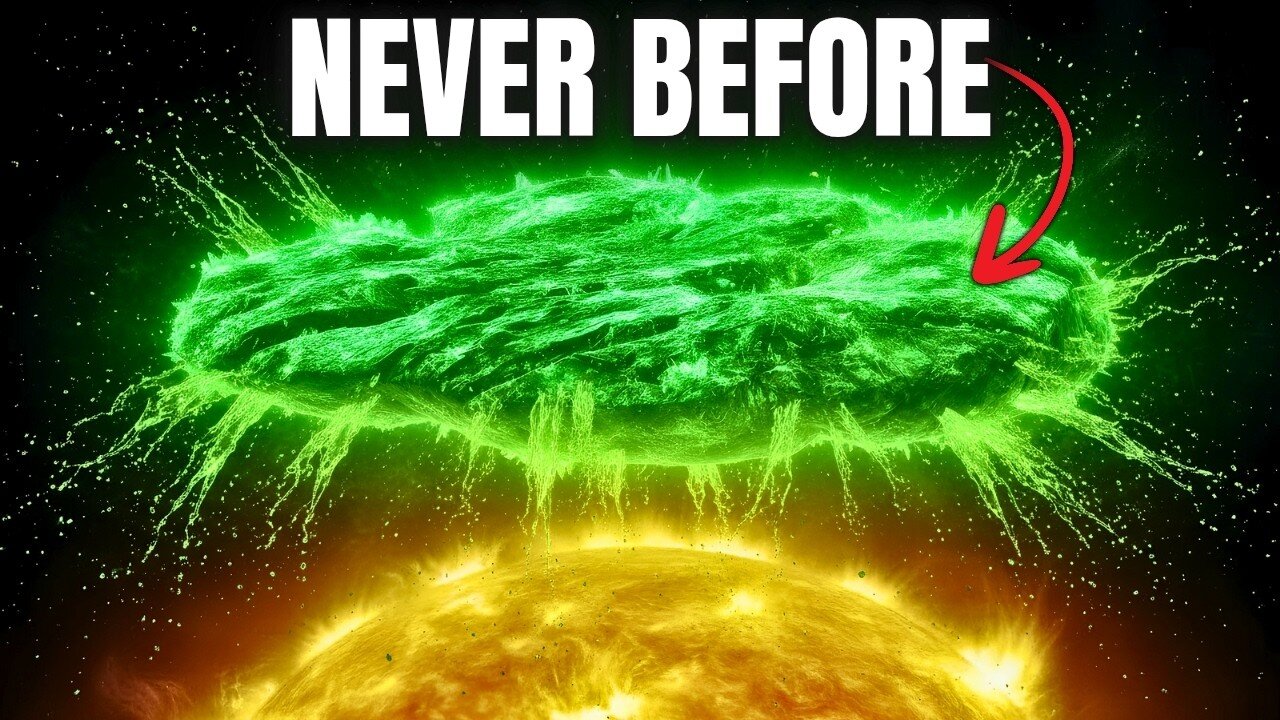Premium Only Content

3I/ATLAS: New Data Reveals MASSIVE Anomaly
3I/ATLAS: New Data Reveals MASSIVE Anomaly
What if the latest observations confirm what the early data quietly suggested? Tonight we move through the newest findings on 3I/ATLAS, where measurements from Swift, JWST, and Mars orbiters have documented outgassing rates and chemical compositions that standard comet models struggle to explain. The evidence arrives in spectra and brightness curves, showing an eight to one carbon dioxide to water ratio that sits four point five sigma above the trend line for every other comet we have studied.
These are not the first observations, but they are the most comprehensive, and they carry within them the validation of anomalies that seemed too consistent to dismiss as measurement error. The scientific conversation has shifted from "interesting comet" to "we need to reconsider formation models." Communities tracking the interstellar visitor have noted the water loss at two point nine AU, the trajectory alignment probability, the chemical fingerprint from a star system ten billion years old.
As we drift through these revelations, we trace the evolution from discovery in July to perihelion in late October, from fragmented speculation to systematic documentation. The new data does not introduce a mystery, it deepens one that has been building quietly beneath headlines about alien motherships and social media panic. What happens when every major telescope from Hubble to JWST to Mars orbiters captures the same unexpected patterns? When amateur observers and professional astronomers see their careful tracking rewarded with Juice observations that will arrive in February?
Tonight's exploration moves softly through validation, through the moment when scattered measurements coalesce into a profile that challenges our understanding of thick disk comets and volatile distribution in ancient planetary systems. This is science for those who question, who wait patiently for data, who find peace in the slow revelation of truth written in photons across three hundred million kilometers. If you drift easily into mysteries that unfold through spectroscopy and orbital mechanics, consider joining this gentle voyage into what 3I/ATLAS carries from the early galaxy.
-
 1:47:20
1:47:20
Badlands Media
12 hours agoBaseless Conspiracies Ep. 154: The Death of Kurt Cobain – Murder, Media, and the Cover-Up
32.7K35 -
 2:04:08
2:04:08
Inverted World Live
6 hours agoRex Jones Calls In From The Gray Area | Ep. 122
30.7K4 -
 5:56:17
5:56:17
Rallied
9 hours ago $2.56 earnedBF6 with THE BOYS
34.9K4 -
 1:05:18
1:05:18
Flyover Conservatives
1 day agoThe SEAL-Turned-CEO Paying Off Millions in Veteran Medical Debt: JOIN THE MISSION! - Bear Handlon, Born Primitive | FOC Show
44.4K4 -

Drew Hernandez
10 hours agoTRUMP'S GAZA PEACE PLAN PHASE 1 & TRUMP THREATENS PUTIN WITH TOMAHAWKS
27.4K16 -
 1:18:38
1:18:38
Glenn Greenwald
9 hours agoProf. John Mearsheimer on Trump's Knesset Speech, the Israel/Hamas Ceasefire, Russia and Ukraine, and More | SYSTEM UPDATE #530
115K77 -
 2:21:37
2:21:37
Tucker Carlson
7 hours agoAlex Jones Warns of the Globalist Death Cult Fueling the Next Civil War and Rise of the Antichrist
89.7K401 -
 12:35
12:35
Clownfish TV
15 hours agoJimmy Kimmel Return NOT Helping Disney AT ALL! DIS Stock Keeps Falling! | Clownfish TV
40.4K8 -
 LIVE
LIVE
Eternal_Spartan
9 hours ago🟢 Eternal Spartan Plays Final Fantasy 7 Rebirth Ep. 10 | USMC Vet
690 watching -
 2:10:42
2:10:42
RiftTV
9 hours agoTrump SECURES Hostages, ACCIDENTALLY Admits Foreign Gov CONTROLS Him? | The Rift | Gerald Morgan Jr.
56.3K48